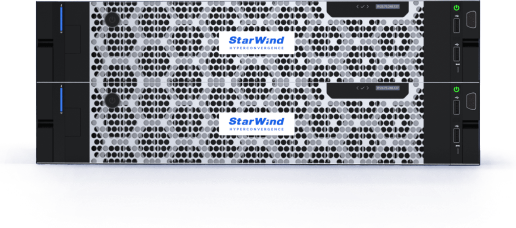Hyper-converged infrastructure (HCI) brings compute, storage, and networking together into a single system. It cuts down on hardware sprawl, simplifies management, and helps scale resources more efficiently. Nutanix and VMware are two of the biggest names here — both offer solid HCI solutions but go about it in different ways.
Nutanix started as a pure software-driven HCI player. VMware, meanwhile, extended its well-known virtualization stack to include HCI through vSAN and a tightly integrated ecosystem.
Let’s break down where they differ — and what you should consider when picking a side.
Why Do People Search for VMware Alternatives?
Broadcom’s $61 billion acquisition of VMware in late 2023 shook things up. Since then, VMware dropped its perpetual licenses in favor of bundled subscriptions (like VMware Cloud Foundation and vSphere Foundation). Fewer SKUs, more lock-in — and some customers have seen their renewal quotes jump 3x to 10x.
Broadcom also laid off a large part of VMware’s workforce, raising concerns about long-term support and product development. With that kind of uncertainty, it’s no surprise that many companies are eyeing alternative options.
What is Nutanix?
Founded in 2009, Nutanix made its name by offering an HCI platform that combines storage, compute, and virtualization in a single software layer. It aims for simplicity and flexibility, supporting private, hybrid, and multi-cloud setups.
Nutanix Products and Features
- Acropolis (AOS): Software-defined platform with native storage and virtualization (via AHV).
- Prism: Web-based dashboard for managing clusters, performance, and capacity.
- Flow and Calm: Tools for microsegmentation, app orchestration, and multi-cloud management.
Nutanix works with its own hypervisor (AHV), but it also supports VMware ESXi and Microsoft Hyper-V. That flexibility makes it appealing for organizations trying to reduce vendor lock-in.
What is VMware?
VMware has been the go-to name in virtualization since 1998. Its HCI offering centers around vSAN, which tightly integrates with vSphere and vCenter to provide a virtualized storage layer.
VMware Products and Features
- vSAN: Software-defined storage that runs natively in the VMware stack.
- NSX: Software-defined networking platform for security and segmentation.
- Tanzu: Kubernetes platform for running containers on-prem or in the cloud.
VMware’s strength lies in its ecosystem. If you’re already deep into VMware tools, vSAN might seem like the next logical step — unless the new licensing model gives you second thoughts.
Nutanix vs VMware: Key Differences
| Feature | Nutanix | VMware |
|---|---|---|
| Architecture | Distributed, software-defined, hypervisor-agnostic (AHV, ESXi, Hyper-V) | Tightly coupled with vSphere; vSAN requires vCenter and vSphere |
| Performance | Built-in data locality, compression, and deduplication; scales linearly | Solid performance, but needs careful tuning at scale; no native data locality |
| Security | Built-in microsegmentation (Flow), encryption, zero-trust by default | NSX for segmentation, vSphere features like TPM and VM encryption; more modular |
| Integration | API-friendly, supports public cloud and on-prem mix; limited 3rd-party storage | Deep 3rd-party integration via vCenter plugins; better compatibility with legacy solutions |
| Management | Unified UI (Prism) with AI-based alerts, automation, capacity planning | Centralized via vCenter, but can require multiple tools (e.g., NSX Manager, Aria Suite) |
| Pricing | Subscription-based, node or core licensing; often more predictable | Recently shifted to bundled subscriptions; costs increased post-Broadcom, fewer purchase options |
Architecture
- Nutanix: Designed as a software-defined platform from day one. Its AHV hypervisor is integrated into the stack but optional. The system runs in a distributed way, meaning all nodes contribute to both storage and compute — which helps with scaling.
- VMware: Built around its legacy of virtualization. vSAN is not standalone — it needs vSphere and vCenter. This tight coupling works well for those already invested in VMware but reduces flexibility.
Performance
- Nutanix: Prioritizes data locality — it tries to keep compute and storage close together on the same node, which reduces latency. Features like inline compression, deduplication, and erasure coding help optimize storage and boost throughput.
- VMware: Performance is solid, but larger deployments can require more tuning. Since vSAN stores data across nodes by default, it may create more east-west traffic unless configured carefully.
Security
- Nutanix: Includes built-in security with minimal add-ons. Microsegmentation (via Flow), encryption at rest, and a zero-trust framework are native features.
- VMware: NSX is powerful but sold separately. You also get VM encryption, secure boot, TPM support, and role-based access control, but advanced security features often require additional components or bundles.
Integration
- Nutanix: Built to work across environments — integrates well with AWS, Azure, and GCP, supports Kubernetes, and has REST APIs for DevOps workflows. But it doesn’t support external SAN/NAS systems.
- VMware: Strong legacy integrations. If you’re using backup tools, monitoring platforms, or third-party storage arrays, VMware likely already has a plugin for it. It’s a smoother fit for highly integrated IT shops.
Management
- Nutanix: Prism gives you a clean, consolidated view. It includes predictive analytics, automated capacity planning, and basic scripting — less overhead for smaller teams.
- VMware: vCenter is powerful but comes with complexity. Add-ons like Aria Suite (formerly vRealize) bring advanced automation, but at a higher learning curve and cost.
Pricing
- Nutanix: Licensing is usually per node or per core. Pricing tends to be more predictable and easier to negotiate based on deployment size and features.
- VMware: With Broadcom in charge, licensing has become bundled and less flexible. Options like vSphere Essentials are gone, and most customers now need to buy full stacks (e.g., VCF) even for smaller needs.
Are There Any Alternatives to Nutanix and VMware?
Nutanix and VMware dominate the HCI conversation, but they’re not your only choices — especially if you’re looking to cut costs, avoid lock-in, or just want more control over your stack:
- Proxmox VE: An open-source virtualization platform that combines KVM, LXC containers, Ceph storage, and a built-in web UI. Great for budget-conscious environments or experienced admins who want full control and transparency. Proxmox can be used to build DIY HCI stacks, especially when paired with Ceph, but it lacks the polish and enterprise support of commercial platforms.
- XCP-ng: A Citrix XenServer fork turned community-driven virtualization platform. It’s open source, well-documented, and integrates with Xen Orchestra, a modern management suite with backup, monitoring, and automation features. XCP-ng can be part of an HCI-like setup using shared or distributed storage (e.g., via iSCSI or ZFS), and it’s particularly appealing to orgs that want a VMware alternative with a cleaner licensing model and no vendor pressure.
- StarWind: Offers a software-defined storage solution that can be used to build HCI environments. Known for simplicity and cost-effectiveness, it requires pairing with a hypervisor like Microsoft Hyper-V, VMware ESXi, or KVM (including Proxmox VE). It’s a solid fit for SMBs or edge environments where simplicity, performance, and cost matter the most.
What to Choose?
If you’re already knee-deep in VMware and rely on its ecosystem, sticking with it might still make sense — but expect to pay more and lose some flexibility.
Nutanix is a good fit if you want something that’s easier to manage, plays nice with hybrid/multi-cloud, and doesn’t come with Broadcom baggage.
And if you want to keep things lightweight and cost-efficient? Alternatives like StarWind with Proxmox VE are more than worth a look.


